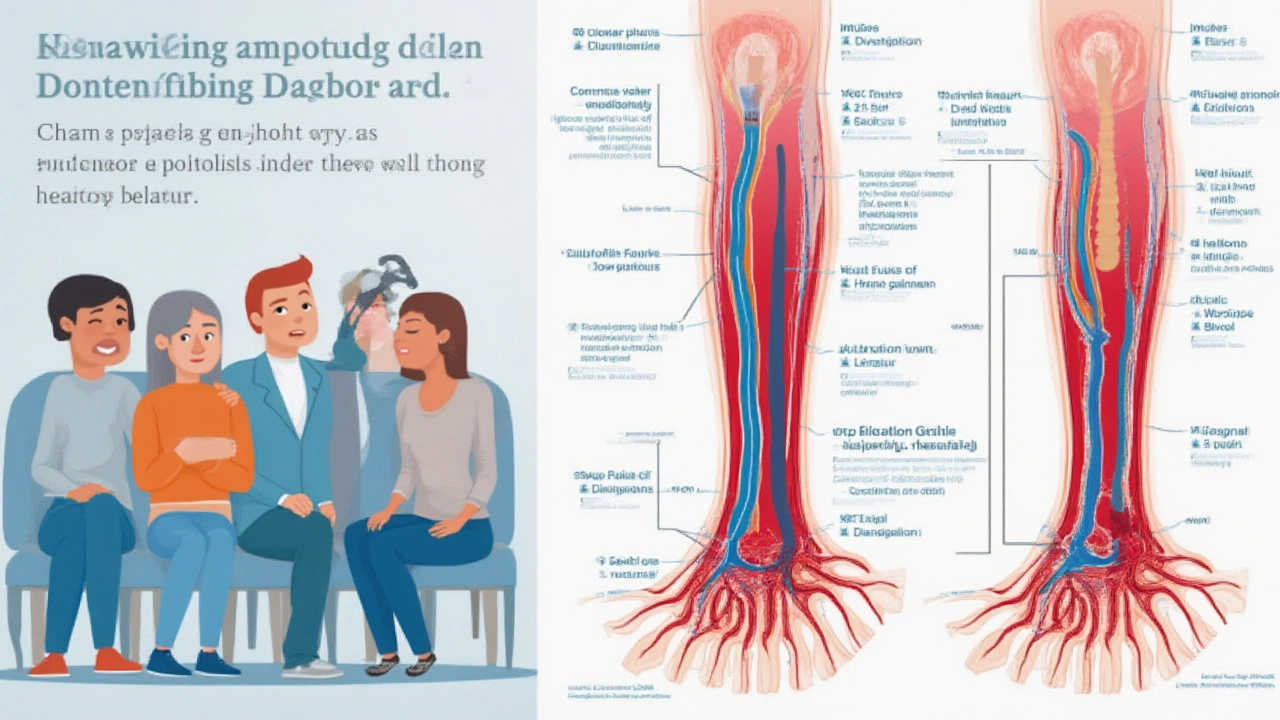Embolism: What It Is, Signs, Risks and How to Treat It
Ever wonder why a clot that forms in your leg can suddenly cause trouble in your lungs? That’s an embolism – a piece of a clot or other material that breaks free and blocks a vessel somewhere else in the body. Understanding how it works helps you spot danger early and act fast.
How Embolisms Form and Move
Most embolisms start as a blood clot, called a thrombus, that builds up in a deep vein, usually in the leg or pelvis. When the clot fragments, the pieces travel through the bloodstream until they hit a vessel too small to pass – that’s the blockage. The same process can happen with fat particles after a fracture, air bubbles from certain medical procedures, or even tumor fragments.
Where the clot lodges determines the type of embolism. If it ends up in the lungs, you get a pulmonary embolism (PE). If it reaches the brain, it can cause a stroke. And if it stays in the leg, it’s often called a deep vein thrombosis (DVT), which can later become a PE if part of it breaks off.
Diagnosing and Managing an Embolism
Symptoms vary by location but common red flags include sudden shortness of breath, sharp chest pain that worsens with breathing, coughing up blood, rapid heartbeat, or unexplained dizziness. In the leg, you might notice swelling, warmth, or a tender, firm area.
Doctors usually start with a physical exam and then order imaging – a CT scan for PE, an ultrasound for DVT, or an MRI for brain involvement. Blood tests for D-dimer can also hint at clot formation.
Treatment aims to stop the clot from growing and prevent new ones. Blood thinners (anticoagulants) are the first line; they don’t dissolve the clot but keep it from getting bigger. In severe cases, clot‑busting drugs (thrombolytics) or a surgical procedure to remove the blockage may be needed.
After the acute phase, long‑term management includes continued anticoagulation for several months, lifestyle changes, and regular follow‑up. Compression stockings can help prevent DVT in the legs, and staying active reduces the risk of clot formation.
Key risk factors you can watch out for are prolonged immobility (like long flights), recent surgery, cancer, pregnancy, hormone therapy, obesity, and a personal or family history of clots. If you have any of these, talk to your doctor about preventive measures.
Bottom line: an embolism is a moving danger that can strike fast, but early recognition, prompt diagnosis, and proper treatment keep it from being fatal. Keep an eye on your body, move regularly, and don’t ignore sudden chest pain or leg swelling – they could be signals that need immediate attention.
-
Chronic Venous Insufficiency & Embolism: What Really Connects Them?
Explore how embolism and chronic venous insufficiency connect, risk factors, stats, symptoms, and actionable steps to keep your veins healthy for life.
